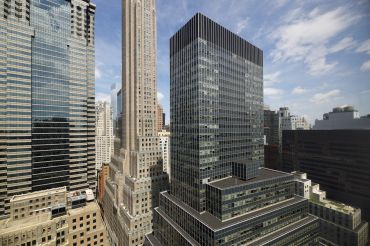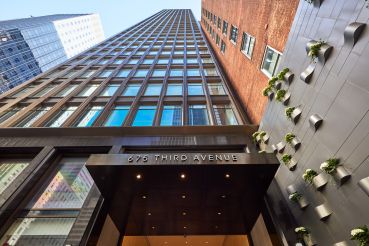 The Building Congress yesterday came out with an understandably bleak construction report showing sluggish growth during the Great Recession in new office space, among other things, and not holding out too much hope for the rest of 2011. This year, in fact, will mark the first since 2000 with no new office tower opening.
The Building Congress yesterday came out with an understandably bleak construction report showing sluggish growth during the Great Recession in new office space, among other things, and not holding out too much hope for the rest of 2011. This year, in fact, will mark the first since 2000 with no new office tower opening.
But is that the worst thing in the world for commercial real estate here and for New York City in general?
Nah.
As the economy collapsed in 2007 and 2008, office vacancy rates climbed upward from historic lows (they had hovered around 6 percent for much of the boom times, an almost artificially low number below what analysts and brokers–and brokers who are analysts–call equilibrium, which is as reassuring to them as it sounds). The vacancy rates toyed or surpassed 10 percent all over the city’s main commercial districts. By 2009, there was little good news for leasing brokers and landlords; for tenants in the hunt, yes.
The rise in vacancy rates, of course, helped put downward pressure on rents, and down they went. Whereas, during the boom, top-shelf towers grabbed $100 or more per foot in taking rents, asking rents in those and in lesser-quality spaces dropped steadily. By 2010, they would reach levels not seen in some areas since the 1990s, before the last recession.
Pretty bad, eh? It could have been worse, much worse.
One of the reasons it was not: New York City did not overbuild commercially during the boom. Sure, we slapped on 20 million square feet of new office space during the last decade, including during the peak years of 2005 through 2007, but a lot of the bigger stuff came on with anchor tenants–620 Eighth Avenue with The New York Times; Bank of America at 1 Bryant Park. Speculative building was unheard of (the announcement of the spec building of 11 Times Square caused quite a stir in 2008).
The city’s developers and their financial backers, in other words, built what was needed and could be generally filled. Had that not been the case–had the last decade been one of barn-burner construction–vacancy rates could have been a lot higher, rents a lot lower, and, eventually, construction financing and jobs that much harder to come by. Why build more when there are empty towers everywhere? (Ever been to downtown Detroit?)
The city may as yet get its chance to have overbuilt, with the World Trade Center construction and the proposed Hudson Yards; and lesser commercial undertakings like Columbia’s West Harlem expansion and whatever finally, maybe, comes up commercial-wise with Atlantic Yards.
For now, though, the news is that office construction has been sluggish of late. And that’s not necessarily the worst thing that the recent past could have given us.


